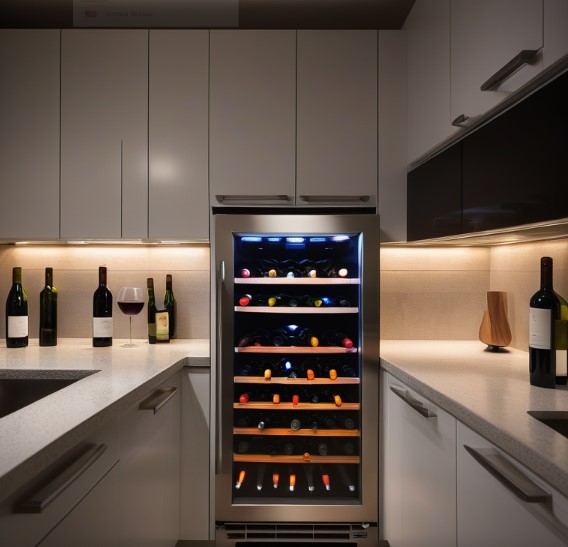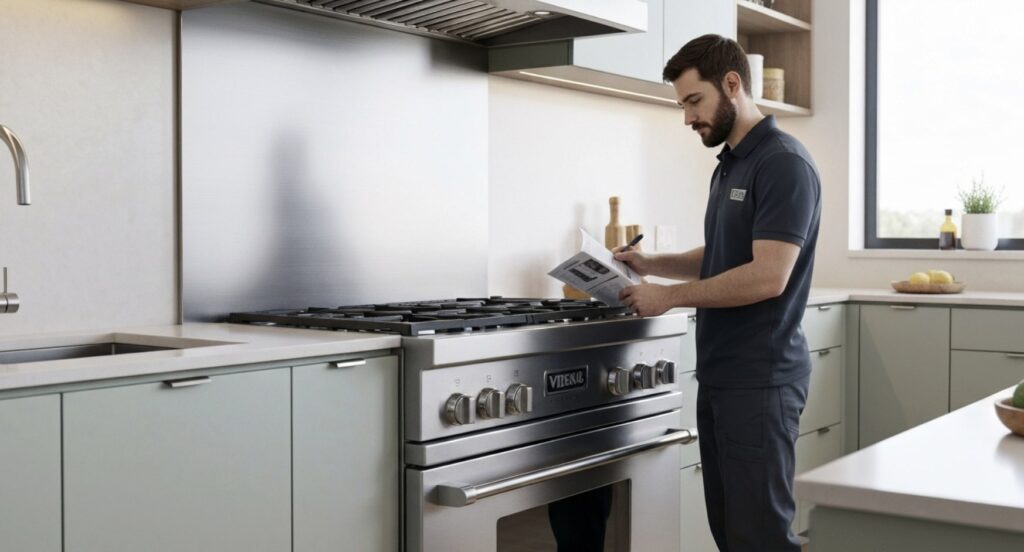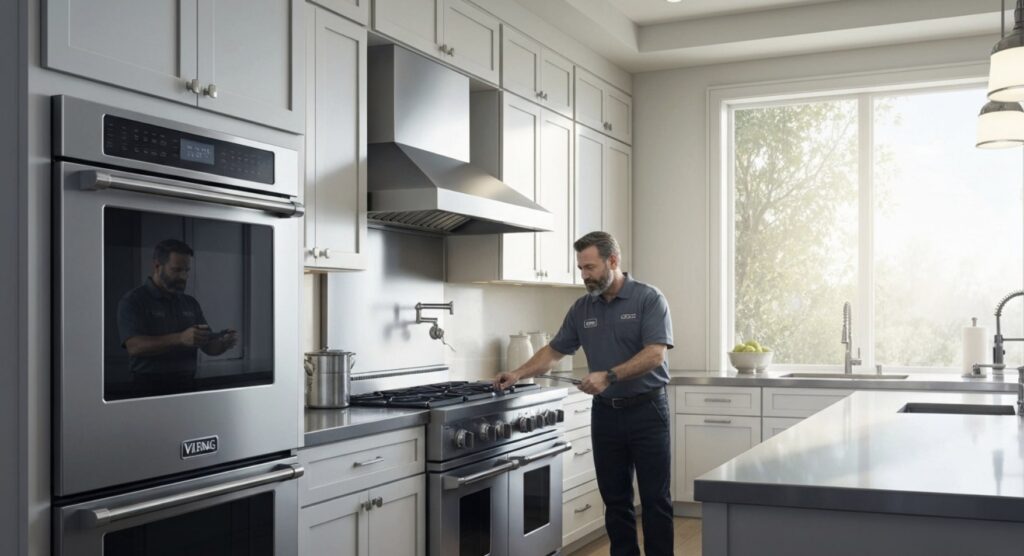A wine cooler, also known as a wine fridge, is a great addition for anyone who wants to keep their wine collection in good condition. It helps keep the flavors and smells fresh. However, if it stops cooling, it can be very annoying. This guide shares 10 common reasons why wine cooler isn’t cooling properly, including potential issues with the wine refrigerator itself, and provides helpful tips to get it back to its best performance.
10 Common Reasons Your Wine Cooler Is Not Cooling
Before you worry, remember that most cooling problems can come from simple solutions. The first step to fixing the issue is finding out what caused it. By knowing these common problems, you can often fix the wine cooler on your own and bring it back to the right temperature.
This guide talks about everything. It covers easy fixes like adjusting the thermostat and more complex problems like refrigerant leaks.
1. Incorrect Thermostat Settings
One simple reason your wine cooler may not be cooling well is an incorrectly set thermostat. Sometimes, you might bump the temperature dial or change the settings when cleaning.
Before you think there’s a big issue, check if your wine cooler’s thermostat is set to the right temperature. You can look at your user manual for specific steps on how to adjust the thermostat. Different models can have different ways.
A good tip is to set the temperature between 50°F and 55°F for the best wine storage.
2. Condenser Coils Need Cleaning
The condenser coils are usually found at the back or bottom of the wine cooler. They help to get rid of heat. Over time, dust, dirt, and debris can build up on these coils. This makes it harder for them to release heat properly.
When this happens, the cooler has to put in more effort. This can lower the cooling efficiency and might even cause the system to fail. That’s why regular cleaning is very important.
To clean the condenser coils, first unplug the wine cooler. Then use a vacuum cleaner with a brush or a coil cleaning brush to get rid of the dirt.
3. Faulty Door Seal
A broken or old door seal can hurt the airtight space needed to keep a steady temperature in the wine cooler.
When the seal is faulty, cool air can leak out and warm air can come in. This makes the cooler work harder to keep the right temperature.
It’s important to check the door seal often for any cracks, tears, or gaps. If the seal looks damaged or doesn’t fit tightly anymore, it should be replaced.
4. Poor Ventilation
Good airflow around the wine cooler is very important for it to work well. If there’s not enough ventilation, the cooler can trap heat. This can cause it to overheat and cool less effectively.
Make sure there is enough space between the cooler and nearby walls or furniture. Check the user manual for the manufacturer’s advice on this.
Usually, it’s best to have at least 2 inches of space on the sides and 4 inches at the back for proper ventilation.
5. Overstocking the Cooler
It’s easy to want to fill your wine cooler to the top. However, putting too many bottles in can block air from moving around inside. This makes it harder for the cooler to keep things cold.
When air can’t flow freely, some places in the cooler might stay warm. This can lead to wine spoiling.
So, do not overcrowd the shelves. Make sure to leave enough space between the bottles. This helps keep the air flowing well in the wine cooler.
6. Electrical Issues
Sometimes, the problem is not with the wine cooler itself but with the power supply. A bad outlet, a tripped circuit breaker, or a damaged power cord can stop the cooler from working and keeping your wine cool.
Make sure the cooler is plugged into a working outlet. If the outlet is fine, but the cooler isn’t getting power, look at the circuit breaker in your electrical panel.
If the circuit breaker is tripped, just reset it. If it still doesn’t work, you may need to replace the cooler’s power cord.
7. Faulty Compressor
The compressor is the main part of the wine cooler’s cooling system. It moves refrigerant around, taking heat out of the cooler and pushing it outside.
If the compressor is not working right, it will not move the refrigerant, which means the cooling won’t be good. A broken compressor might make strange sounds or may not start at all.
Fixing a bad compressor usually needs a skilled expert. If you think there is a problem with your compressor, call a qualified appliance repair technician.
8. Refrigerant Leak
Refrigerant is a liquid that takes in heat as it moves through the cooling system. If there is a leak in the refrigerant lines, the cooler can’t keep things cool.
You can often hear a hissing sound when there is a refrigerant leak. You may also see that the cooler is not working as well as it should.
It’s important to have trained professionals fix refrigerant leaks. They have the right tools and know the safety procedures to handle them.
9. Evaporator Fan Problems
The evaporator fan helps move cold air around in the wine cooler. This keeps the temperature balanced. If the fan stops working, cold air won’t flow well. This can cause some areas to get too warm and cool down unevenly.
A broken fan can make strange sounds like grinding or clicking. It might even stop running completely.
Usually, if the fan is not working, it needs to be replaced. It is best to ask a professional technician for help.
10. Ambient Temperature Effects
Extreme temperatures, especially heat, can affect how a wine cooler works. Wine coolers are made to work well only within a certain temperature range.
If the temperature around it gets too high, the cooler may not keep the set temperature very well. This can make cooling less effective. It’s a good idea to check the manufacturer’s guidelines for the right temperature range.
To help your wine cooler work better in hot weather, think about moving it to a cooler spot or giving it extra ventilation.
How to Fix Common Wine Cooler Cooling Issues
Many common problems with wine cooler cooling can be fixed easily. You can solve these issues quickly. This will help avoid more trouble and make your appliance last longer.
Before you try to fix anything, always unplug the cooler. This will keep you safe from electrical shocks.
Adjusting the Thermostat Properly
Start by making sure the thermostat is set to the right temperature. Look at the manufacturer’s instructions to find the right temperature range for your cooler model.
Use a thermometer to check the cooler’s internal temperature. If the thermostat does not show the correct internal temperature, it might need to be adjusted. This process is usually simple and you can find it in the user manual.
If adjusting does not fix the problem, the thermostat might need to be replaced. It’s best to let a professional technician take care of this.
Cleaning the Condenser Coils
Cleaning the condenser coils often helps your wine cooler work better. First, unplug the cooler. Then, find the condenser coils. They are usually at the back or bottom of the unit.
Next, use a vacuum cleaner with a brush or a coil cleaning brush to gently clean off dust and dirt from the coils. Be careful not to hurt the coils while you clean.
If there’s tough dirt, use warm water mixed with a little mild detergent. You can apply this mix with a soft cloth or sponge. Make sure to rinse it well. After that, let the coils dry completely before you plug the cooler back in.
Replacing the Door Seal
- Check the door seal for any damage like cracks, tears, or gaps. If it is hurting, you should replace it to keep it airtight.
- To change the door seal, buy a suitable replacement from the maker or a good appliance parts seller. Look at your user manual for clear steps on how to take out and put in the door seal.
- After you put the new seal on, shut the cooler door and make sure it seals tightly all the way around.
Enhancing Cooler Ventilation
Make sure there is enough space around the wine cooler for air to flow. Check the manufacturer’s guidelines for minimum distances, which are usually 2 inches on the sides and 4 inches at the back.
If you have the cooler inside cabinets, make sure the cabinets have enough openings for air.
You might want to use a fan to help move air around the cooler, especially when it’s hot. However, do not put the fan right in front of the condenser coils, because this can block airflow.
Preventive Maintenance Tips for Your Wine Cooler
Just like any other appliance, taking care of your wine cooler can help it work well and avoid expensive repairs down the road. By adding a few simple habits to your routine, you can make sure your wine cooler lasts for years without problems.
These easy tips aim at cleaning it, using it correctly, and checking it often to keep your wine cooler in good shape.
Regular Cleaning Schedule
- Set a regular cleaning routine for the inside and outside of your wine cooler. Use a mix of warm water and baking soda to wipe down the inside. Focus on the shelves and small spaces.
- Clean the condenser coils every three months. If your cooler is in a dusty place, clean them more often. Use a vacuum to gently remove dust and dirt.
- Regularly clean the door seal with a mild detergent solution to get rid of dirt or mold. Check the door seal for any damage. Replace it if you find any issues.
Proper Stocking Techniques
Avoid putting too many bottles in your wine cooler. This blocks airflow and makes it harder to keep your wine cool. Leave enough space between the bottles so air can move around.
Store your wines on their sides. This keeps the corks moist and stops oxidation. Do not keep open bottles in the cooler for too long, as air can spoil the wine.
Set up your collection to lessen how often you open the door. Don’t leave the door open for a long time since this changes the temperature.
- Organize by region or type.
- Use shelf dividers to keep bottles apart.
- Keep a running list of what you have.
Conclusion
In short, learning why wine cooler isn’t cooling properly and how to address them is vital for proper storage of your wine collection. This includes adjusting the thermostat, cleaning the coils, and checking for any electrical issues. Good ventilation and door seals are very important for effective cooling. Doing regular cleaning and stocking up properly can help your wine cooler last longer. For more tips, check out our detailed blog on “How Long Can You Store Wine in a Wine Cooler.” Stay informed so you can keep your wine collection in great shape.
Frequently Asked Questions
What temperature should my wine cooler be set at?
The best temperature to store wine in most wine fridges or wine cellars is between 50°F and 55°F. Always check your wine cooler’s manual for the best advice.
How often should I clean my wine cooler’s condenser coils?
You should clean your wine cooler’s condenser coils every three months. If your wine fridge is in a dusty place, it’s a good idea to clean them more often.
What do I do if my wine cooler is not cooling after troubleshooting?
If you have tried some simple fixes and your wine cooler is still not cooling right, it is a good idea to call a trained appliance repair technician. They can find out what is wrong and fix the problem.







